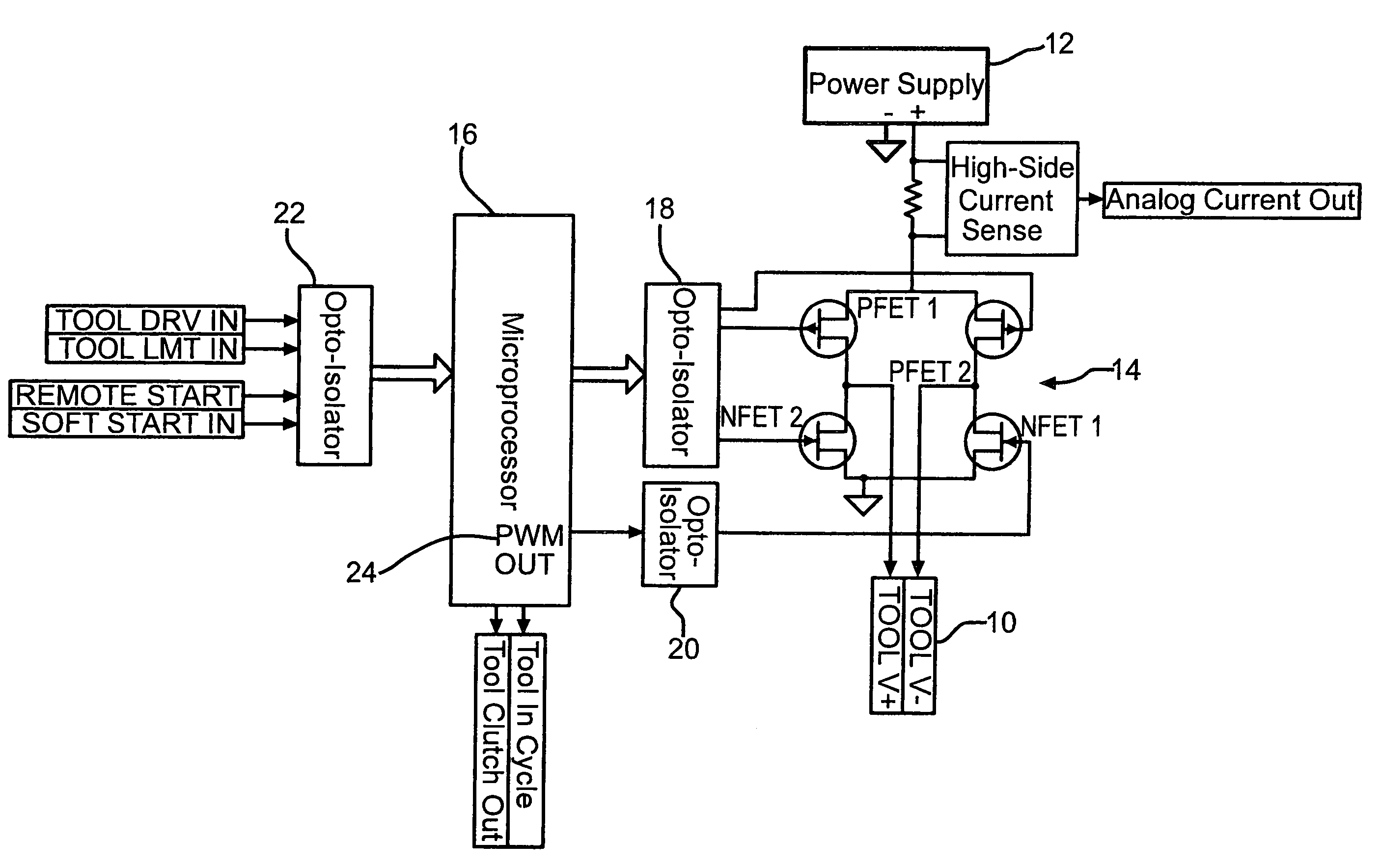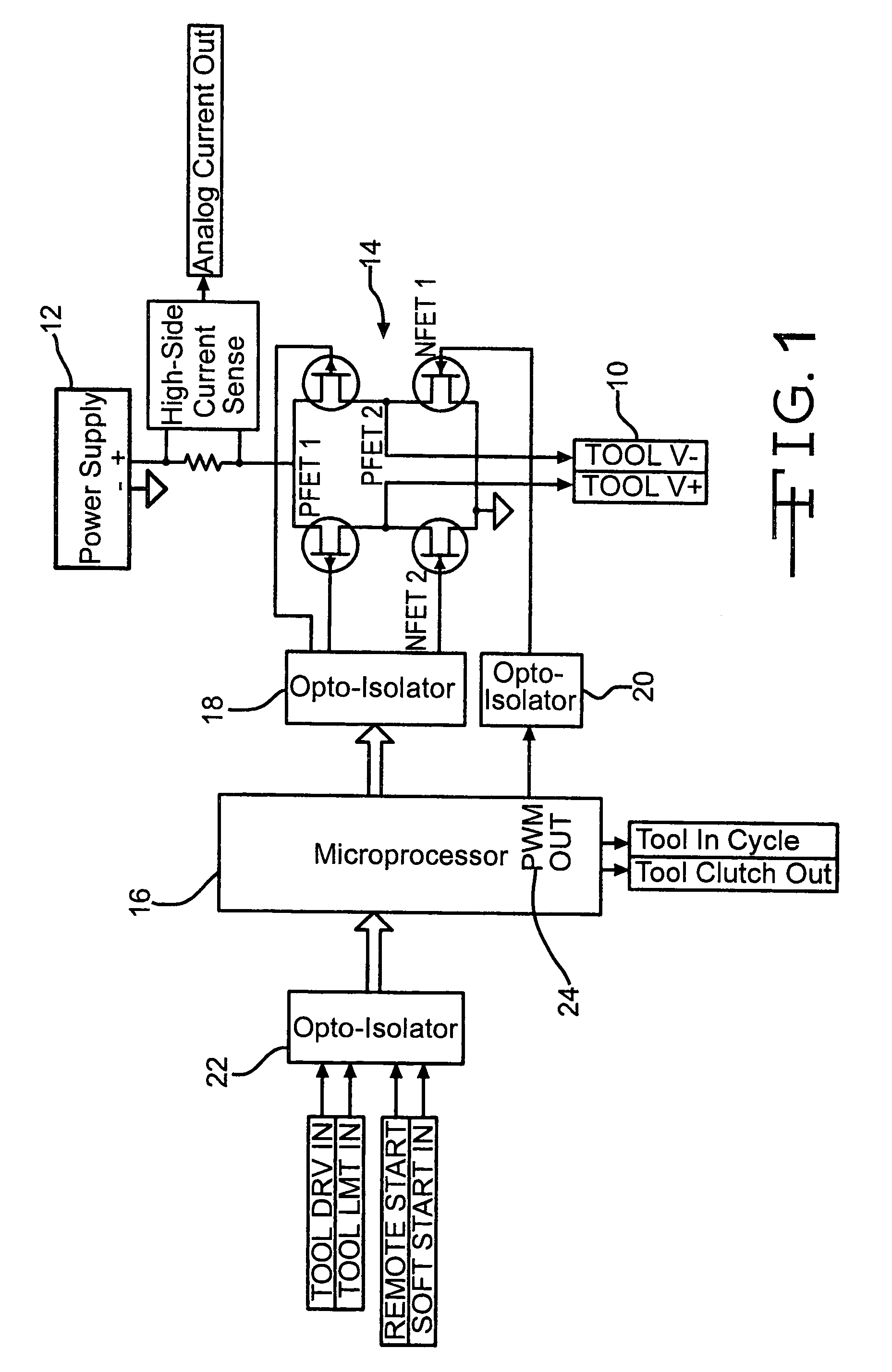Power tool interface
a tool interface and tool technology, applied in the direction of pulse technique, ignition automatic control, instruments, etc., can solve the problems of large tools, unsatisfactory approaches, and bulky tools
- Summary
- Abstract
- Description
- Claims
- Application Information
AI Technical Summary
Benefits of technology
Problems solved by technology
Method used
Image
Examples
Embodiment Construction
[0008]FIG. 1 is a block diagram for the control circuit of this invention providing power to DC power tool 10. DC power supply 12 provides power to tool 10 through interface 14. Microprocessor 16 is connected to interface 14 through opto-isolator 18 and opto-isolator 20. Interface 14 includes field effect transistors PFET1, PFET2, NFET1 and NFET2.
[0009]When tool 10 is at rest, microprocessor 16 will turn on PFET1 with all of the other FETs off. The microprocessor is programmed, when the tool is at rest, to allow PFET1 to conduct by grounding its gate and placing all remaining FETs in their non-conducting states. This action provides a positive voltage to tool 10 so that signals can be read by the microprocessor. However, since NFET1 is off there is no complete path to ground. Therefore tool 10 cannot run. The microprocessor is programmed to control the gate voltages of PFET1 and NFET1. As a result, PFET1 and NFET1 provide power to the tool allowing the tool to run in a forward or cl...
PUM
 Login to View More
Login to View More Abstract
Description
Claims
Application Information
 Login to View More
Login to View More - R&D
- Intellectual Property
- Life Sciences
- Materials
- Tech Scout
- Unparalleled Data Quality
- Higher Quality Content
- 60% Fewer Hallucinations
Browse by: Latest US Patents, China's latest patents, Technical Efficacy Thesaurus, Application Domain, Technology Topic, Popular Technical Reports.
© 2025 PatSnap. All rights reserved.Legal|Privacy policy|Modern Slavery Act Transparency Statement|Sitemap|About US| Contact US: help@patsnap.com



